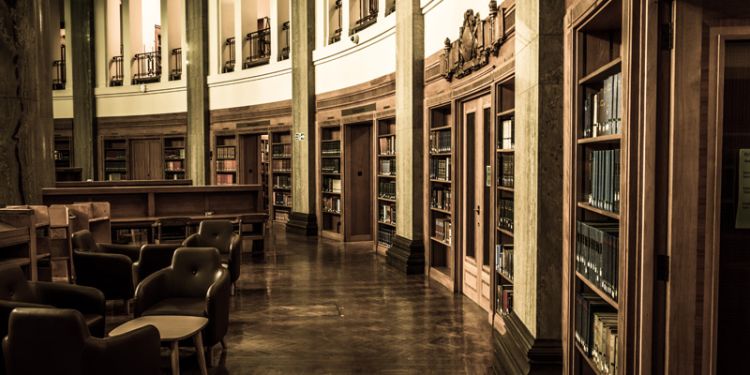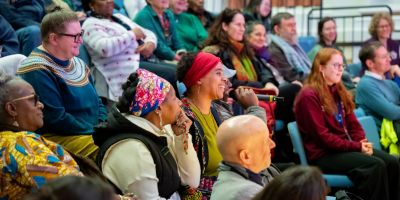Piecing together our fragmented heritage: Ripon Cathedral fragments at the University of Leeds

Special Collections at the University of Leeds hosts an event spotlighting manuscript fragments from Ripon Cathedral Library’s rare books.
On 4 February, the Special Collections hosted an event about manuscript fragments, stowaways hidden in medieval manuscripts from Ripon Cathedral. Once manuscripts were no longer useful, they were torn apart, but what happened next? This day aimed at answering this question and highlighting fragment and manuscript history.
Many fragment and manuscript enthusiasts attended the event, including guests from Ripon Cathedral itself, most notably the current Dean, John Dobson.
Dr N Kıvılcım Yavuz (University of Leeds) and Dr Leonardo Costantini (University of Bristol) commenced the day by each presenting the history of manuscripts and (the Ripon) fragments. Dr Yavuz’s talk, titled ‘Understanding the Ripon Cathedral Fragments and their context’, discussed the definition and production of manuscripts and fragments. She presented the room with examples, both from Ripon Cathedral and elsewhere, and emphasised the importance of manuscript fragments within history.
Dr Costantini discussed manuscript fragments in the context of the development of manuscripts to incunabula (early printed books) in the fifteenth century. He discussed the reuse of older manuscripts to strengthen the incunabula. Then, he presented a timeline of the Ripon Collection at the Brotherton Library. From the development of the Cathedral by St Wilfrid in the seventh century to the Dissolution in the sixteenth century, which dispersed the medieval manuscripts, to the collection of medieval manuscripts and incunabula by Dean Higgins in the seventeenth century, and the acquirement of nine manuscripts and incunabula from the Cathedral Library to Leeds in 1985.
After a short break, Rhiannon Lawrence-Francis from Special Collections discussed the Ripon fragments from a collections curator’s and cataloguer’s perspective. She focused more deeply on the creation and development of Ripon Cathedral’s library and Dean Higgins’ important role in, perhaps unwittingly, passing onto us the manuscript fragments. Following on, she presented the fragments from a different perspective; she discussed not their contents or their production but their marks of ownership, wear and tear, damage, and what these marks can convey about their history and use.
In order to get different responses to the fragments, the project involved people from different backgrounds, including the next speaker, Alice Fox, who provided an artistic interpretation. She wanted to help interpret the fragments for a contemporary and mixed audience, and thus focused on their physicality and materiality. Analysing the fragments, she found “themes”, such as torn edges, folds, holes, and glue marks, which made her think of links to contemporary materials. Using everyday objects, she “recreated” the fragments, creating in the end a series of objects on 21 separate sheets.
After lunch, the audience split into two, to each enjoy a separate 45-minute session before they swapped to enjoy the other session. One of the two sessions was a recorded presentation of Rhian Isaac from Leeds Central Library. She presented yet another perspective on the fragments, that of a librarian. She discussed the fragments themselves, their audience, and their story; what is their story and how can they be told to a wider audience? A colleague of hers, Phil, attended in her stead (as she, unfortunately, had Covid) and brought with him various fragments from the Central Library to show the audience.
The second session was hosted by Linette Withers, a bookbinder. Through showing, and handing out, contemporary recreations of medieval manuscripts and fragments, she presented the audience with an understanding of their materiality and production.
The day concluded with a roundtable discussion, where Dean Dobson expressed his, and the Cathedral’s, interest in future collaboration to bring to light these stowaways from history. Dr Yavuz additionally announced a project involving workshops on the digitisation and publication of manuscripts and fragments, focusing on the Ripon fragments. Overall, the audience at the event enjoyed it very much and were inspired to think further about medieval manuscript fragments and their future in scholarship and wider society. There still is a long way to go in terms of fragmentology, especially the Special Collection’s Ripon holdings, however this event lit a spark of interest for the future.




